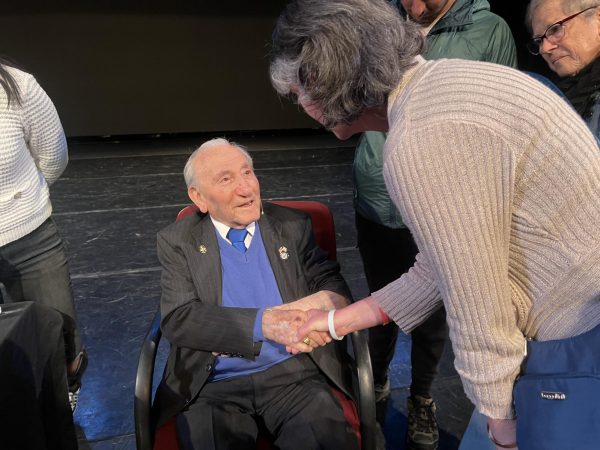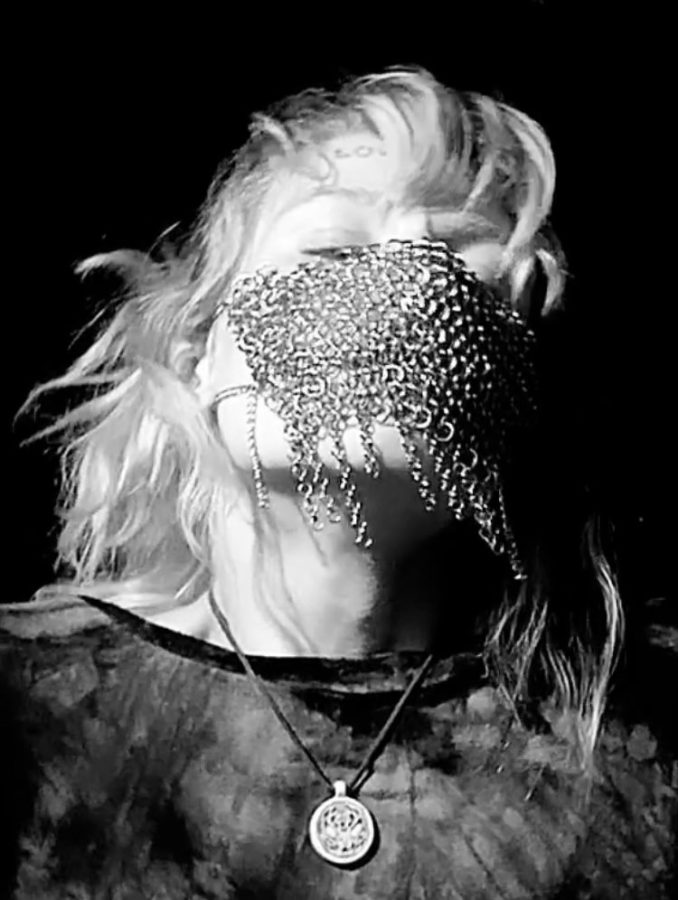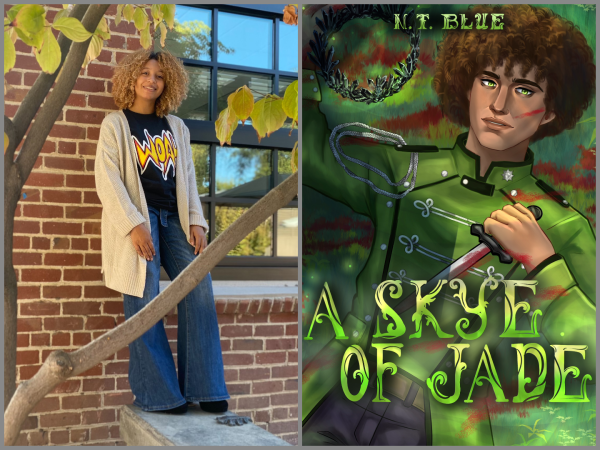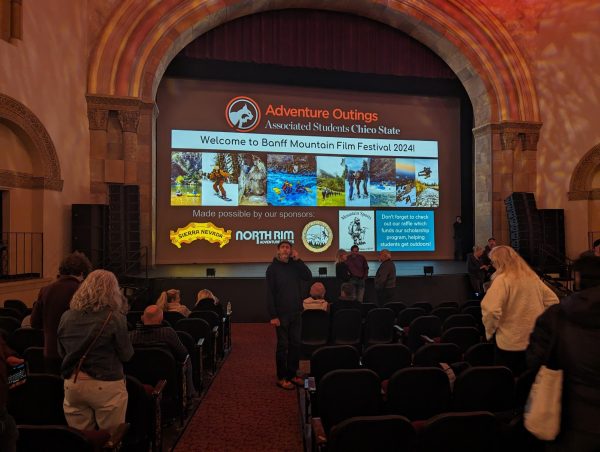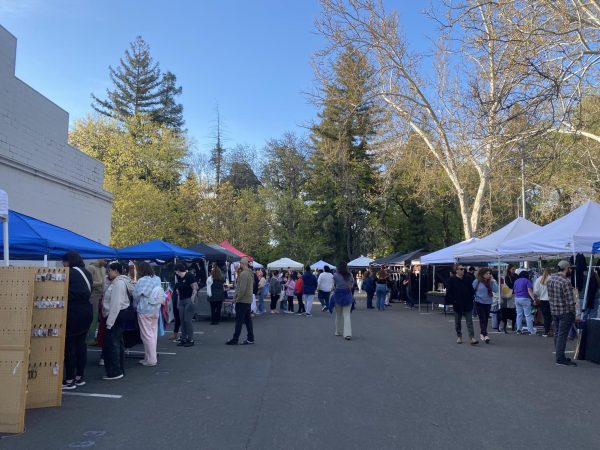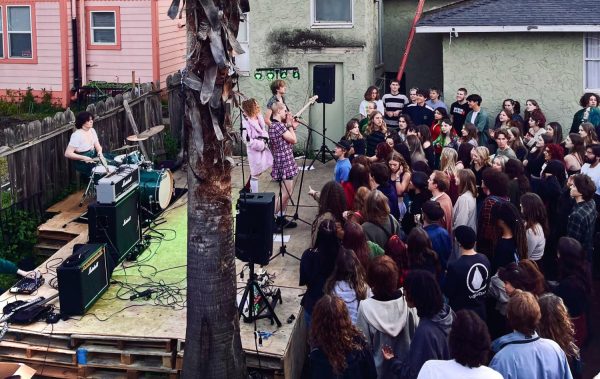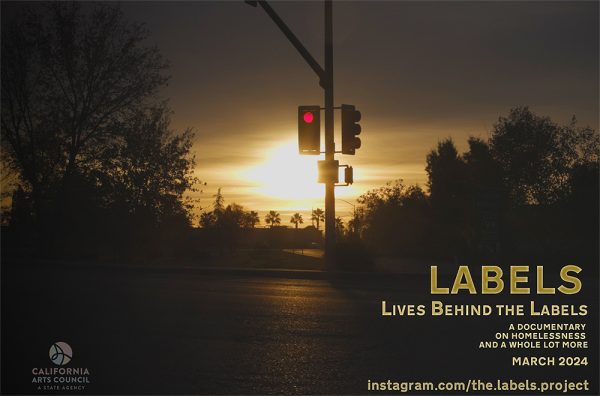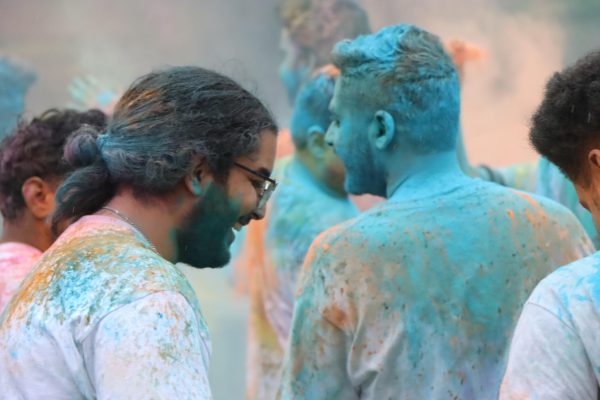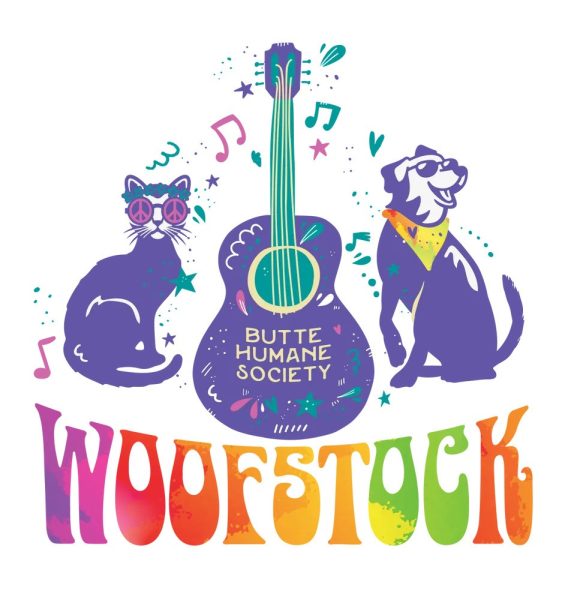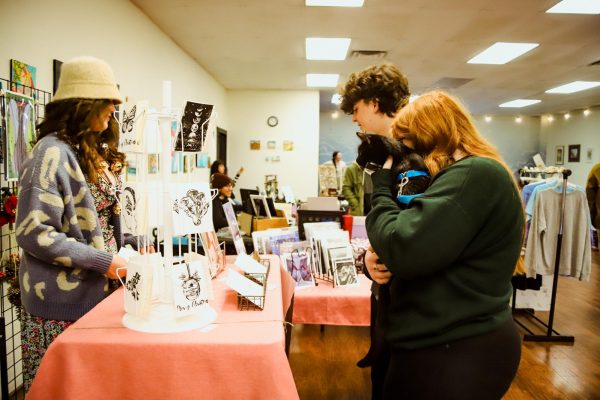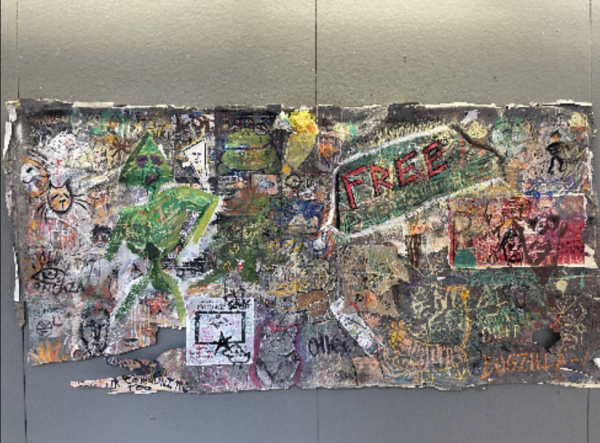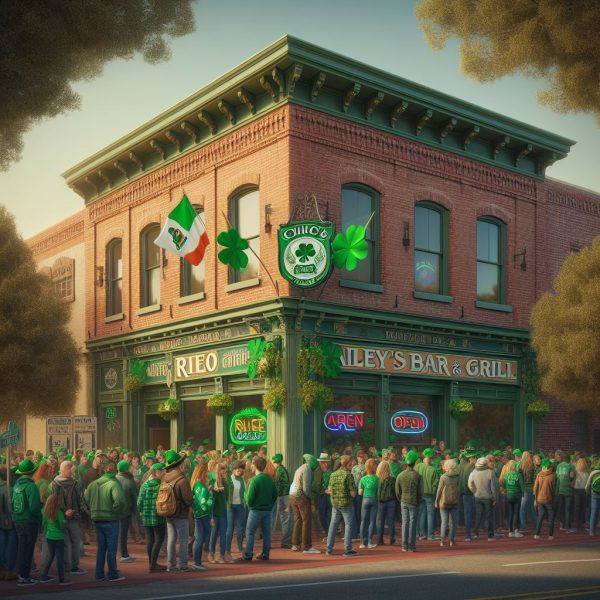Common suspect: dark fantasy fashion
Common Collective, an art collective that organizes events to bring the community together and support local artists, hosted the first-ever Suspect Gala and Dark Fantasy Fashion Show on Oct. 15.
The event began at noon, with multiple vendors gathered in the outdoor part of the Chico Women’s Club. People wandered around and looked at local artists’ work, like hand-made jewelry, drawings and clothing.
Live performances by Elise the Destroyer, Mars & the Fine Poets, who won KCSC’s Battle of the Bands in September, and WROSE were featured during the market portion.
The market, which ended at around 5 p.m., gave way to preparation for the main event, the fashion show, which featured five fashion designers and their clothing. Event coordinators, designers and models moved inside to start getting ready. The night then ended with a “surprise musical performance,” as advertised.
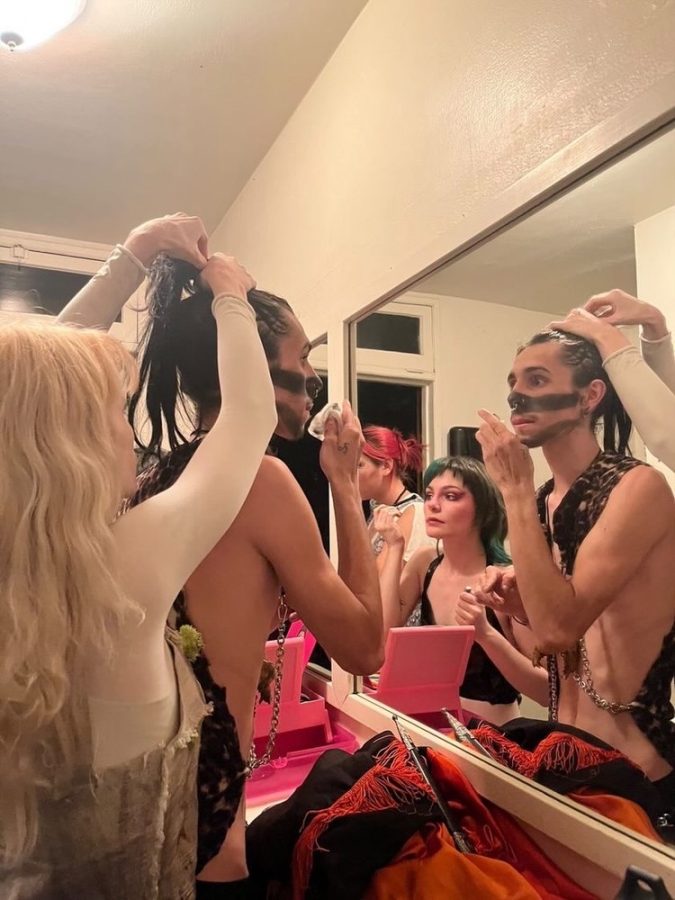
Haunting and dark, the room held an excited buzz in the minutes leading up to the start of the show. You could feel the rumble of the loud, dramatic classical music through the shiny wooden floor.
Fake cobwebs hung from the curtain rods, and a skull with glasses sat on the stage, staring out at the audience. There were two strings of rope lights taped to the floor that outlined the runway. On the right side of the runway, the rope lights were blank, missing their golden hue as it disappeared around the corner of the seating section.
A pumpkin-faced ghoul and a purple-clothed witch sat together close to the stage. Two others sat alone at the very end of the runway, dressed to impress in elf ears.
A small drink dispenser labeled “Free Kool-Aid” sat on the edge of a table in the back right corner of the room. Multiple solo cups in a variety of colors sat beside it. Posters with relevant hashtags, and the phrase “Not a cult, a culture,” hung on the wall.
A couple of minutes past the designated start time, Mandi Wilson, one of the event coordinators, took to the stage in styled slacks and a blazer to give us the five-minute warning.
I watched lighting technicians take their places behind the softboxes at the very end of the runway, and a stage bat with a short cape, Keith Elliot, took their place at the right corner of the stage. Some designers and others backstage slid out from a large pair of wooden doors to take their seats in chairs labeled “Reserved.”
Soon thereafter, Wilson took the stage again, along with D’Artanion Markowski, the second event coordinator, who was dressed in an orange jumpsuit. As they introduced themselves, Markowski slid his jumpsuit down to his ankles, revealing an orange skirt layered over a fully striped ensemble.
As they bought time for the models backstage and behind the curtain, they profusely thanked Christy Sullivan, the owner of Alter Ego Costumes in Chico. They said that if it hadn’t been for her, the fashion show may not have happened. They said that in the past the group hosted an event in the parking lot of Sullivan’s shop, and from there the concept of the Suspect Fashion Show was born. Sullivan, in a long, pale red dress, reluctantly took a stand as the audience gave her a round of applause.
After a few more minutes of banter, and thank-yous, Wilson and Markowski left the stage and took their seats at the end of the runway. The lighting changed to red, and a voice could be heard over the loudspeaker. A voice told the story of three characters.
Billie Eilish’s “You Should See Me in a Crown,” began playing as the first model took the stage. The first fashion set, designed by Wilson and Markowski and made by Sullivan, started with a vampire, Mia Collins, dressed in a black and orange dress with a high-low crinoline skirt, wore a cape that she took off and tied around her waist as she started to make her way down the runway.
Next came a king, Corban Fowler, in a white crown and skull mask, pinstripe pants, a white, long-sleeve shirt and a cape with an orange exterior and black and white checkered interior. He brandished a longsword at the audience. The voiceover said that the character had the same face as our first leader.
Finally, a black-masked and hatted model, Marc Anthony Mercado, in a black shirt and pants and a white corset took to the runway. They too wielded a sword, and wore a cape with the symbol for anarchism.
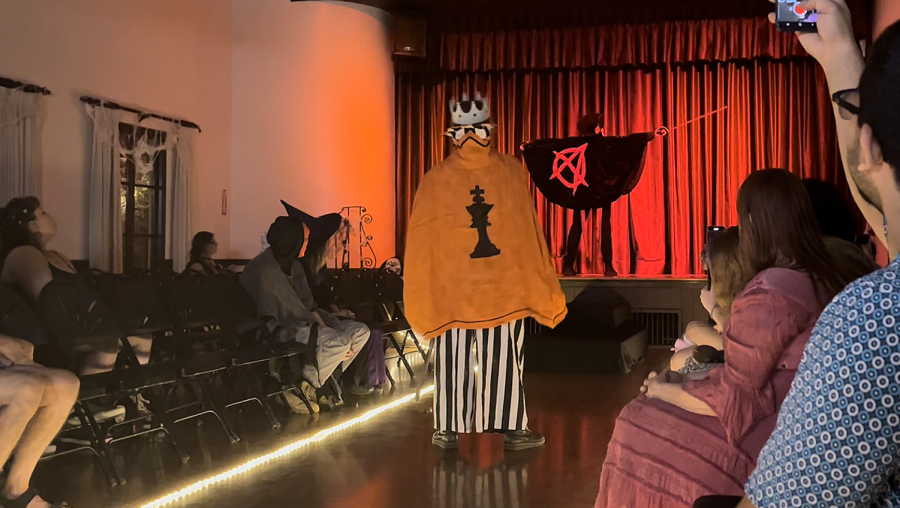
Rage Against the Machine’s “Killing in the Name” took over the speakers as the king and anarchist prepared to duel, swords swung wildly as they made their way down the runway.
The king triumphed over the anarchist, and prepared to execute him, but the vampire distracted him as his sword was about to drop on the head of the anarchist. She did this again, but this time it was in the form of a knife in the back. She then dragged the king back up the runway by his entrails ,pulled out through his front, until he was in front of the stage. She stole his crown and became the true queen.
After this, Meghan Lacombe, founder of With Honey and Cream designs, took the stage in a floor-length, twilight gown with sparkling detailing. She talked about her interests as an artist, a photographer, a content creator and a fashion designer. She then introduced her collection, each designed to represent a different way that women often felt, and influenced by Linda Schierse Leonard’s Meeting the Madwoman: An Inner Challenge for Feminine Spirit.
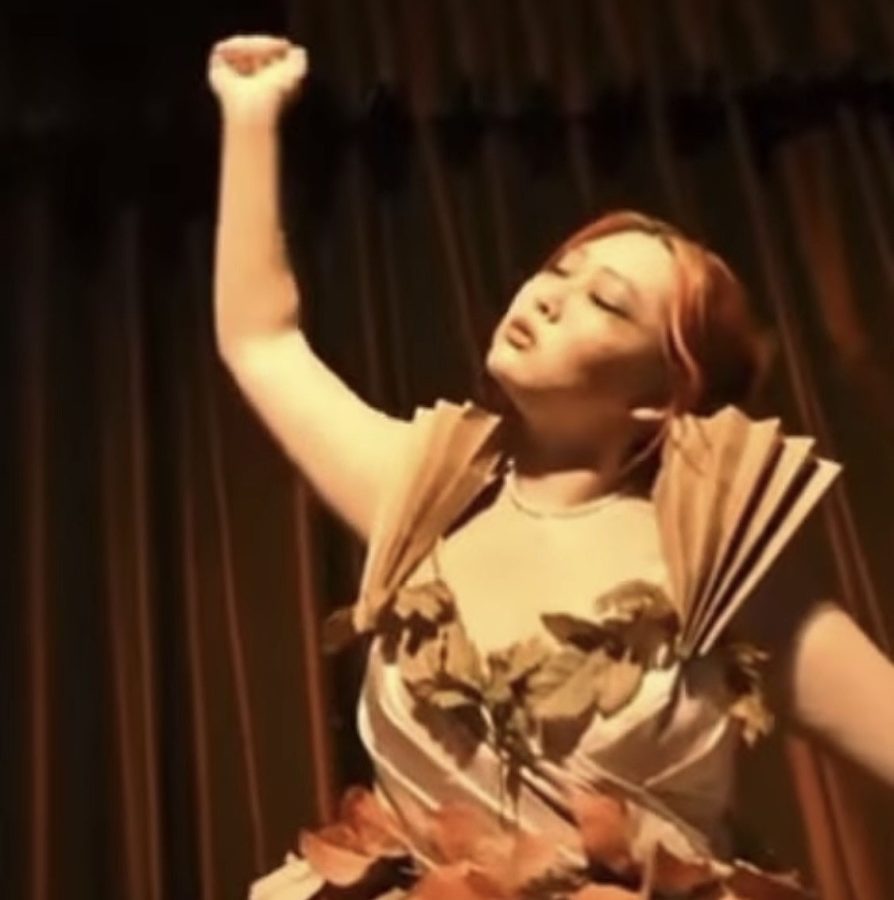
One of Lacombe’s designs included “the paper-bag lady,” in which a model, Alexis Ong, wore a corset and partial skirt made out of paper bags. She was designed to represent the women who are different, and pave their own paths, but need to learn that they don’t need to go through life alone.
Next, the stage once again turned red, and a deep, altered voiceover came through the speaker, reverberating through the room. The audience laughed heartily at the occasional joke and every time the comically low voice uttered “uhhhh….” The voice detailed that the next set of designs, by Slurrped.pdf, designed by Chris Godbout, was created from repurposed materials. Godbout joked that it was partially due to the fact that he didn’t want to spend money.
The designs that walked down the runway were repurposed clothing decked out in, well literal decks. Playing cards, stickers, masks, you name it. As interesting as the designs were, the showmanship was what sparked my interest. The first model wielded knives on stage and toward the audience. Another was prompted by the voiceover to do push-ups into the worm, then sit-ups. The voiceover deemed these moves “not good enough” and told the model to go to “his office,” as punishment.
After this third designer, there was a thirty-minute break so the models could prepare for the next two sets of designs. Everyone pooled outside, where there were drinks and merchandise for sale. A large chess set, decks of cards and Jenga waited for anyone willing to play.
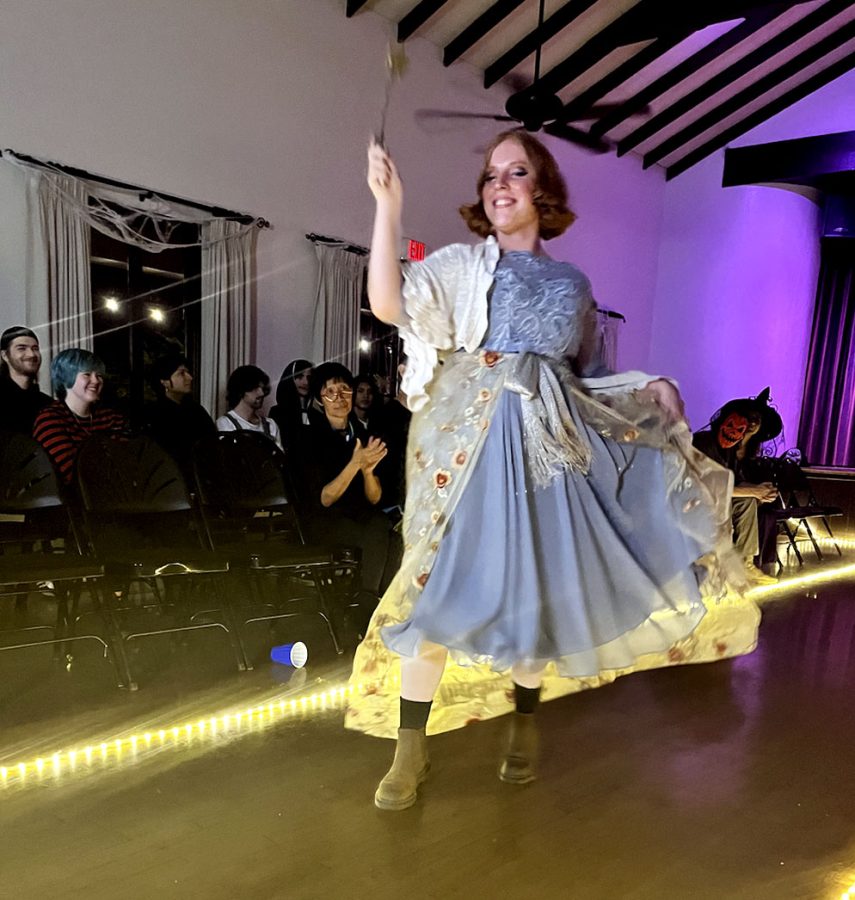
The audience was then called back in with a five-minute warning. Soon the next designer, MoonshadowMakers, founded by Julian Lacombe, took to the stage. They said that their designs were inspired by the lore of the fae. The designs included a Faery Godmother with a pale blue gown and a hand-crafted wand. Another was a nature-type faery, with antlers and a small, hand-crafted bow made out of what appeared to be a branch and twine.
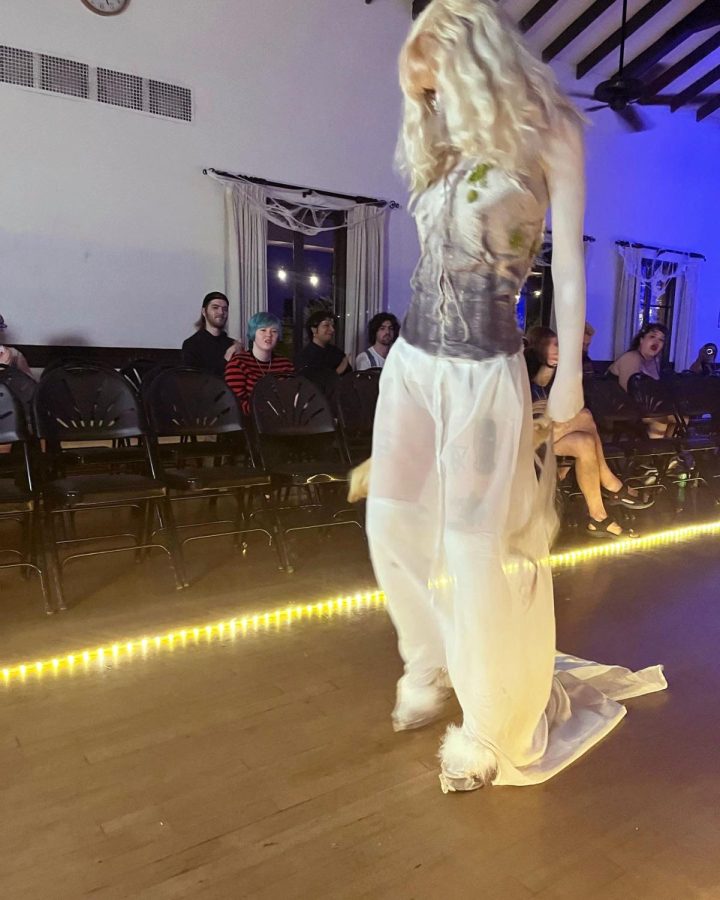
The last set of designs, created by Effigy, founded by Neavh Lovecreek, seemed to be the belle of the ball. Markowski took to the stage to introduce Effigy’s designs. The first design was a nearly all-white gown with a sheer skirt. The model, Lovecreek themself, also wore a metal mask that covered their mouth. The design, meant to represent the cíunas na beansíidhe, or silence of the faery woman, a creature who emerged from decay caused by crusades, one who had been rendered unable to sing or scream due to their lungs being full of dirt. As they stumbled down through the audience using small, restricted steps, they pulled hair from their scalp and posed at the end of the runway.
The fifth and final design, my personal favorite, was a model, Jen Vasquez, in shorts designed to appear as a loincloth and animal-skin-styled cloth covering their shoulders, meant to depict a jaguar from Tezcatlipoca’s forests reclaiming its pelt. Chains ran across their chest and abdomen and connected the separate pieces of clothing. The model also wore a face mask with large metal wiring sticking out from it. This post-apocalyptic style fit in nicely with the model’s gimmick, where they artistically twirled multi-colored, light-up poi balls. You can see all of Effigy’s designs on their YouTube account.
As Wilson and Markowski took the stage once again, they brought the models out to take a bow and thanked the designers and others who helped in the making and production of the gala and fashion show.
The audience was once again directed outside as they folded chairs and repositioned the string lights to form a large square dance floor. As the cool breeze swirled around the audience members outside, we could hear drum beats and the tuning of guitars and bass guitars as the “surprise musical guest” prepared to rock the hall.
Eventually everyone flooded back inside, it was apparent that the atmosphere had changed. Everyone was noq ready to listen to some awesome music. Markowski took the stage again, but this time in a different role. As he climbed the steps he said, “For the rest of the night, I will be a musician.”
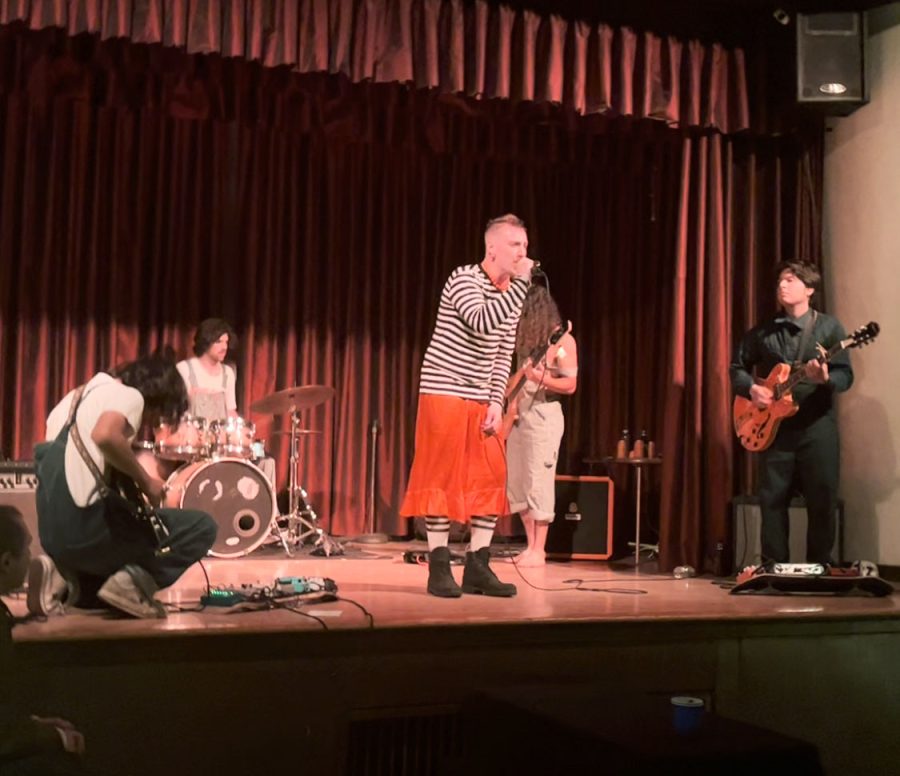
Common Collective Band, who also performed at KCSC’s Battle of the Bands, a five-piece musical group, began the set with a loud, emotional song. After a short break caused by a malfunctioning mic, they were back at it, this time accompanied by a small mosh pit that formed at the foot of the stage.
The mosh pit became increasingly more wild and tenacious as Markowski and his band rocked harder and harder. However, it was all fun and games until Wilson took a tumble in the small, raucous group, where the pit then quickly dispersed.
As the night went on, the audience progressively thinned out, but those who stayed received a night to remember. Markowski’s unforgettable and impactful voice and song messages mixed with the memories of the costumes created a pleasant buzz within my mind, one that refuses to dissipate. I hope the Common Collective will make the Suspect Gala and Fashion Show an annual event, so that others may be able to experience this one-of-a-kind night.
Ariana Powell can be found at [email protected].



